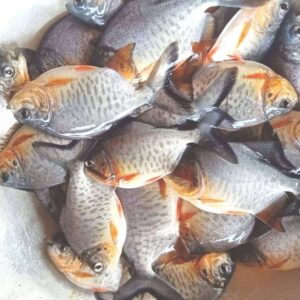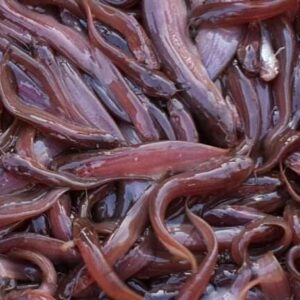Desi Magur Fish Seeds Farming: Culture, Importance, Growth Ratio, and Water Treatment
Desi Magur (also known as Clarias batrachus or Indian Catfish) is a popular freshwater species in South Asia. Known for its hardiness, fast growth, and high market demand, it is commonly farmed for both local consumption and commercial trade. The species is highly valued for its delicious meat and nutritional content.
Let’s dive into the aspects of Desi Magur farming, including its culture, importance, growth ratio, and water treatment.
1. Culture of Desi Magur Fish Farming
Desi Magur farming involves a number of steps, from seed production to harvesting. This species is highly adaptable and can be raised in various farming systems, including ponds, tanks, and integrated systems with crops.
Production Process:
-
Spawning and Hatchery Management:
-
Desi Magur is typically bred through artificial breeding in controlled environments. The female catfish is hormonally induced to spawn, and the male catfish’s sperm is used to fertilize the eggs.
-
The fertilized eggs are then incubated in hatchery tanks until they hatch into fry. The fry are carefully monitored for water quality, oxygen levels, and feed during the early stages.
-
-
Nursery Stage:
-
The hatched fry are raised in nursery tanks or ponds until they grow into fingerlings. The nursery stage lasts for about 30-60 days, and during this time, the fish are given nutritious feed to support healthy growth.
-
-
Grow-out Stage:
-
The fingerlings are then transferred to grow-out ponds or tanks where they are raised until they reach a marketable size (usually 200-300 grams). The grow-out stage typically takes 6-9 months to reach market size, depending on water quality, feed, and environmental factors.
-
Desi Magur is a carnivorous species and primarily feeds on small fish, insects, worms, and artificial pellets. Regular feeding with high-protein diets promotes faster growth.
-
-
Harvesting:
-
Desi Magur is generally harvested when it reaches 200-300 grams, though it can grow larger if conditions are optimal. Harvesting is done using netting or trapping methods.
-
-
Farming Systems:
-
Pond Culture: Most Desi Magur is farmed in earthen ponds, which can either be extensive (low stocking density and minimal inputs) or intensive (higher stocking density with controlled feeding and water quality management).
-
Tank Culture: In high-density farming systems, tanks can be used for controlled environments, including Recirculating Aquaculture Systems (RAS). This is more common in commercial farms looking to optimize space and productivity.
-
2. Importance of Desi Magur Fish Farming
Desi Magur has significant economic and ecological importance in South Asia, especially in India, Bangladesh, and Myanmar.
Economic Importance:
-
High Market Demand: Desi Magur is highly valued in the market for its delicious meat, which is tender and nutritious. The fish is in high demand across local markets, urban areas, and restaurants, making it a lucrative species to farm.
-
Low Input Costs: Desi Magur is hardy and can be raised in low-cost ponds or tanks with relatively low feed and water quality requirements compared to other fish species. This makes it an affordable fish to farm and suitable for small-scale and medium-scale farmers.
-
Sustainable Protein Source: The demand for affordable animal protein is increasing in many parts of Asia, and farming Desi Magur provides a sustainable solution to meet this need. Fish farming, especially of hardy species like Desi Magur, can contribute to food security in rural areas.
-
Traditional and Cultural Value: Desi Magur has cultural significance in many South Asian regions and is commonly consumed in traditional dishes. Its farming supports the local food culture and provides livelihoods for rural communities.
Ecological Importance:
-
Hardiness: Desi Magur is a resilient species that can tolerate a variety of environmental conditions. This makes it an ideal species for integrated farming systems, where it can be raised alongside other crops or livestock, contributing to biodiversity and sustainability.
-
Efficient Use of Resources: Desi Magur can be raised in low-oxygen environments (e.g., shallow ponds) and can survive in polluted waters, making it useful for farming in areas with limited access to clean water. This adaptability can make it a sustainable option for farmers in challenging environments.
3. Growth Ratio of Desi Magur Fish
Desi Magur is valued for its fast growth and efficient feed conversion. It’s an ideal species for aquaculture due to its ability to grow rapidly in suitable conditions.
Growth Rate:
-
Fingerling to Harvest: Desi Magur can grow from fry to harvestable size (200-300 grams) in 6-9 months.
-
Growth per Month: On average, Desi Magur can grow about 30-50 grams per month under good farming conditions. With optimal water quality and feeding, some fish can grow faster, reaching 500 grams or more within a year.
Feed Conversion Ratio (FCR):
-
The feed conversion ratio (FCR) for Desi Magur is typically 1.5-2, meaning that for every 1.5 to 2 kg of feed consumed, the fish will gain 1 kg of body weight. This relatively low FCR makes it a cost-effective species for commercial farming.
Size at Harvest:
-
Market Size: The typical market size for Desi Magur is around 200-300 grams, though fish can grow to 1 kg or larger if given enough time and resources. Farmers often harvest them at smaller sizes to meet market demand for fresh fish.
4. Water Treatment and Management
Water quality is critical to the success of Desi Magur farming. Proper management of water parameters ensures healthy fish, optimal growth, and reduced risk of disease.
Key Water Parameters:
-
Temperature:
-
Desi Magur prefers warm water, with an optimal temperature range of 25°C to 30°C (77°F to 86°F). Water that is too cold can slow growth, and temperatures above 30°C can stress the fish.
-
-
Dissolved Oxygen (DO):
-
Desi Magur is a low-oxygen tolerant species, but like all fish, it still requires sufficient dissolved oxygen for optimal growth. A minimum of 4-5 mg/L of DO is required for healthy fish. Oxygen levels should be monitored regularly, especially in high-density systems or intensive ponds.
-
Aeration systems, such as paddlewheels, air stones, or diffused aerators, are essential in maintaining oxygen levels in larger or higher-density ponds.
-
-
pH Levels:
-
The ideal pH range for Desi Magur is between 6.5 and 8.5. Water that is too acidic or alkaline can cause stress, leading to poor growth and disease susceptibility.
-
-
Ammonia and Nitrite Levels:
-
Ammonia (NH₃) and nitrite (NO₂) are toxic to fish, even in small amounts. Ammonia levels should be kept below 0.5 mg/L, and nitrite levels below 0.1 mg/L.
-
Biofiltration systems are often used in intensive farming setups to help break down toxic ammonia and convert it into less harmful nitrates, which can be absorbed by plants in integrated farming systems.
-
-
Turbidity and Organic Matter:
-
High organic load and turbidity can lead to oxygen depletion and promote the growth of harmful microorganisms. Regular pond cleaning, removal of excess feed, and efficient filtration are necessary to keep the water clean and clear.
-
Water Treatment Systems:
-
Aeration: To ensure proper oxygen levels, aeration systems are necessary. These may include air pumps, paddlewheels, or water circulation devices to promote oxygen exchange and water movement.
-
Filtration: Mechanical filtration is used to remove debris and solid waste, while biofilters help break down ammonia and other nitrogenous waste into less harmful substances.
-
Water Exchange: Regular partial water exchanges (10-30% per week) help prevent the buildup of toxins and replenish fresh water. In intensive systems, recirculating aquaculture systems (RAS) may be used to treat and reuse water, reducing water consumption.
-
Monitoring: Regular water quality tests (for oxygen, pH, ammonia, nitrites, and temperature) are essential. Automated monitoring systems can be useful for maintaining optimal conditions and quickly addressing any issues.






Reviews
There are no reviews yet.